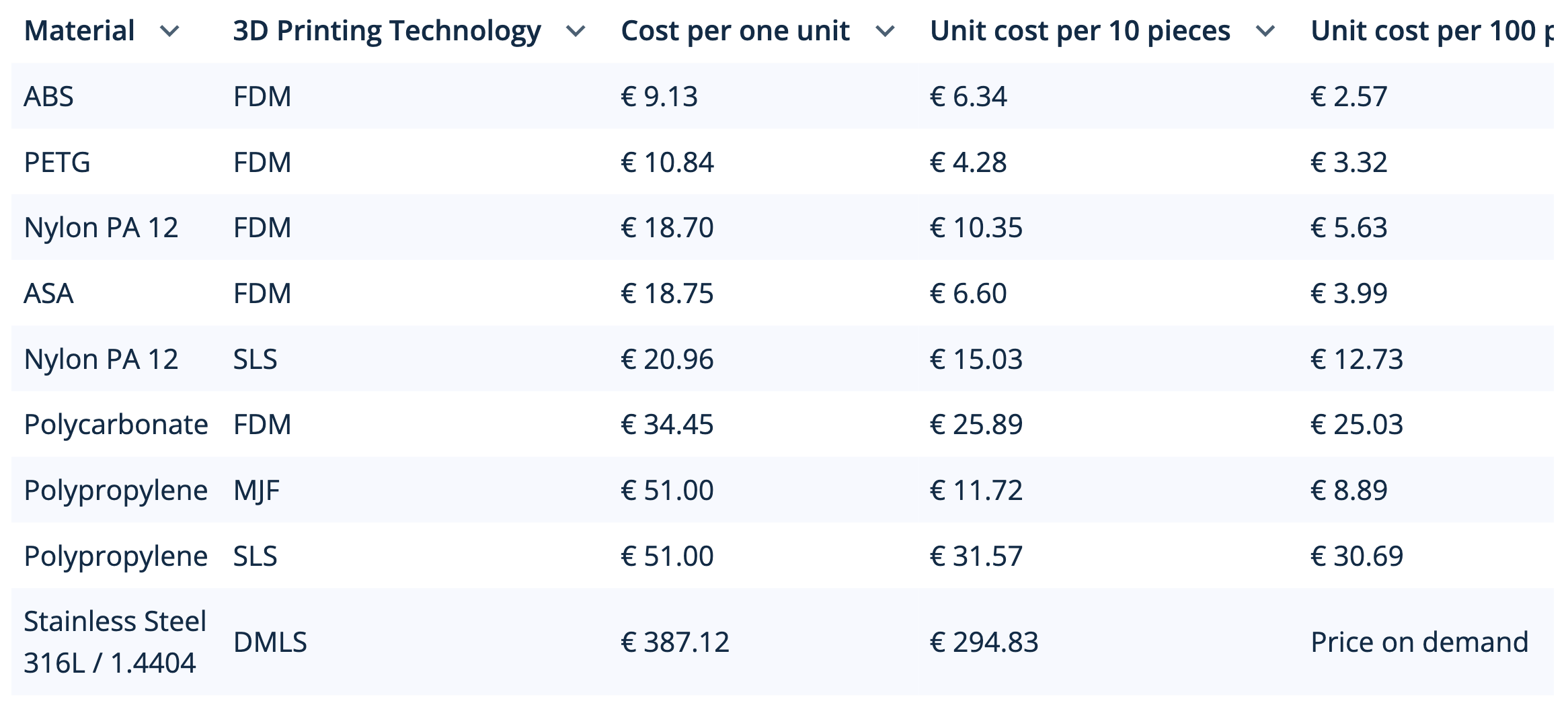Suggested Topics
Topic
Replies
Views
Activity
Acrylic or pc for outdoor enclosures
hi! For transparent cover for an outdoor sensor needs to stay clear, handle some impacts, and resist sunlight - would you go with acrylic or polycarbonate? Acrylic has better UV and scratch resistance, but... read more
2
9
Nov 26
Best flexible 3D printing material for vibration-damping motor mounts
Hi Everyone! We’re designing a vibration-damping mounting bracket (approx. 150×80×40 mm) for a small electric motor housing, and we’re considering 3D printing it in a flexible material. Given the operating environment includes oil exposure,... read more
1
48
Nov 18
Soft rubbery material.
Hi, I'm trying to make a small gasket like thing with quite a thin wall (0.8 or 1mm) It has to be soft and rubbery a bit like a thick elastic band. It would... read more
0
677
Aug 19
Best 3D printing material for child-safe educational toy prototype
Hello! I need advice on a small prototype for an educational toy aimed at children aged 3–6. It consists of interlocking geometric shapes (around 8–10 parts per set), with no mechanical function. I’m planning... read more
2
1.3k
Jul 16
Alodine coating enough for avionics enclosures?
Hi there, my project is a CNC machined enclosure in 6061-T6 aluminum for an avionics module that’ll be mounted in a wing compartment exposed to temperature swings, some humidity, but not direct salt spray.... read more
2
1.1k
Jul 15
 Europe
Europe  Türkiye
Türkiye  United Kingdom
United Kingdom  Global
Global 

 Login with my Xometry account
Login with my Xometry account 